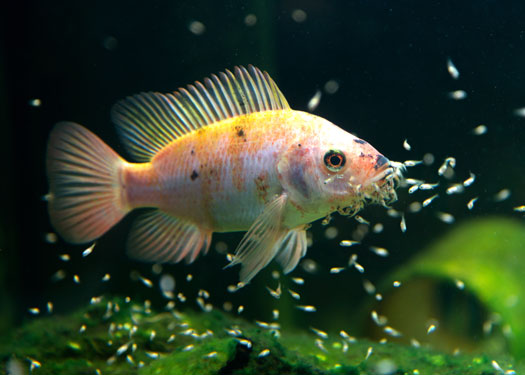
A Comprehensive Guide to Nurturing Baby Fish: Essential Care for Tiny Aquatic Wonders
Introduction
The arrival of baby fish, also known as fry, marks an exciting chapter in the life of any aquarium enthusiast. These delicate creatures require specialized care to thrive and reach their full potential. This comprehensive guide will provide you with all the essential knowledge and techniques to ensure the well-being of your baby fish.
Creating an Optimal Environment
1. Aquarium Setup:
- Tank Size: Choose a tank that is appropriate for the species and number of fry. A 10-gallon tank is suitable for most small fry species.
- Filtration: Install a gentle filter to maintain water quality without creating strong currents that can overwhelm the fry.
- Lighting: Provide 12-14 hours of low-intensity lighting daily to promote growth and development.
- Substrate: Use a fine-grained substrate, such as sand or gravel, that provides a stable surface for the fry to rest on.
- Plants: Include live plants to provide hiding places, reduce stress, and improve water quality.
2. Water Parameters:
- Temperature: Maintain the water temperature within the optimal range for the species. Most tropical fry thrive at temperatures between 78-82°F (26-28°C).
- pH: Adjust the pH to match the specific requirements of the species. Most fry prefer a pH between 6.5-7.5.
- Hardness: Ensure the water hardness is appropriate for the species. Most fry can tolerate a hardness range of 5-15 dGH.
- Ammonia and Nitrite: Keep ammonia and nitrite levels at zero. These compounds are toxic to fry and can cause serious health issues.
Feeding Baby Fish
1. Frequency and Amount:
- Feed fry several times a day, offering small amounts each time. Overfeeding can lead to water quality issues and digestive problems.
- Adjust the feeding schedule as the fry grow and their appetites increase.
2. Types of Food:
- Live Food: Newly hatched brine shrimp, microworms, and infusoria are excellent live food options for fry.
- Frozen Food: Frozen baby brine shrimp and daphnia are convenient and nutritious alternatives to live food.
- Commercial Fry Food: Specially formulated fry food provides a balanced diet and is easy to use.
3. Feeding Techniques:
- Use a small pipette or turkey baster to distribute food evenly throughout the tank.
- Avoid overfeeding by observing the fry’s feeding behavior. If they stop eating, remove any uneaten food.
Maintaining Water Quality
1. Regular Water Changes:
- Perform partial water changes of 10-20% weekly to remove waste and replenish essential minerals.
- Use a siphon to gently remove water from the bottom of the tank.
2. Water Testing:
- Regularly test the water parameters to ensure they remain within the optimal range.
- Use a test kit to monitor ammonia, nitrite, nitrate, pH, and hardness.
3. Cleaning the Tank:
- Vacuum the substrate regularly to remove waste and debris.
- Clean the filter media as needed to maintain its efficiency.
- Avoid using harsh chemicals or detergents in the tank.
Health and Disease Prevention
1. Signs of Illness:
- Watch for any changes in behavior, appearance, or feeding habits.
- Common signs of illness include lethargy, loss of appetite, discoloration, and abnormal swimming patterns.
2. Treatment:
- If you suspect your fry are sick, isolate them in a separate tank.
- Consult with a veterinarian or experienced aquarist for proper diagnosis and treatment.
- Use medications only as directed and follow the instructions carefully.
3. Prevention:
- Maintain optimal water quality to reduce the risk of disease.
- Quarantine new fish before adding them to the tank.
- Avoid overcrowding the tank.
Growth and Development
1. Growth Rate:
- The growth rate of fry varies depending on the species and environmental conditions.
- Most fry will reach adulthood within a few months to a year.
2. Developmental Stages:
- Fry undergo several developmental stages before reaching adulthood.
- These stages include the egg stage, larval stage, juvenile stage, and adult stage.
3. Sex Determination:
- The sex of fry is often difficult to determine until they reach sexual maturity.
- Some species exhibit sexual dimorphism, where males and females have different physical characteristics.
Conclusion
Caring for baby fish requires patience, attention to detail, and a commitment to providing the best possible environment for their growth and well-being. By following the guidelines outlined in this comprehensive guide, you can ensure that your baby fish thrive and reach their full potential, bringing endless joy and fascination to your aquarium. Remember to observe your fry closely, monitor their health, and adjust their care as they grow and develop. With dedication and a love for these tiny aquatic wonders, you can create a thriving underwater paradise where they can flourish.
